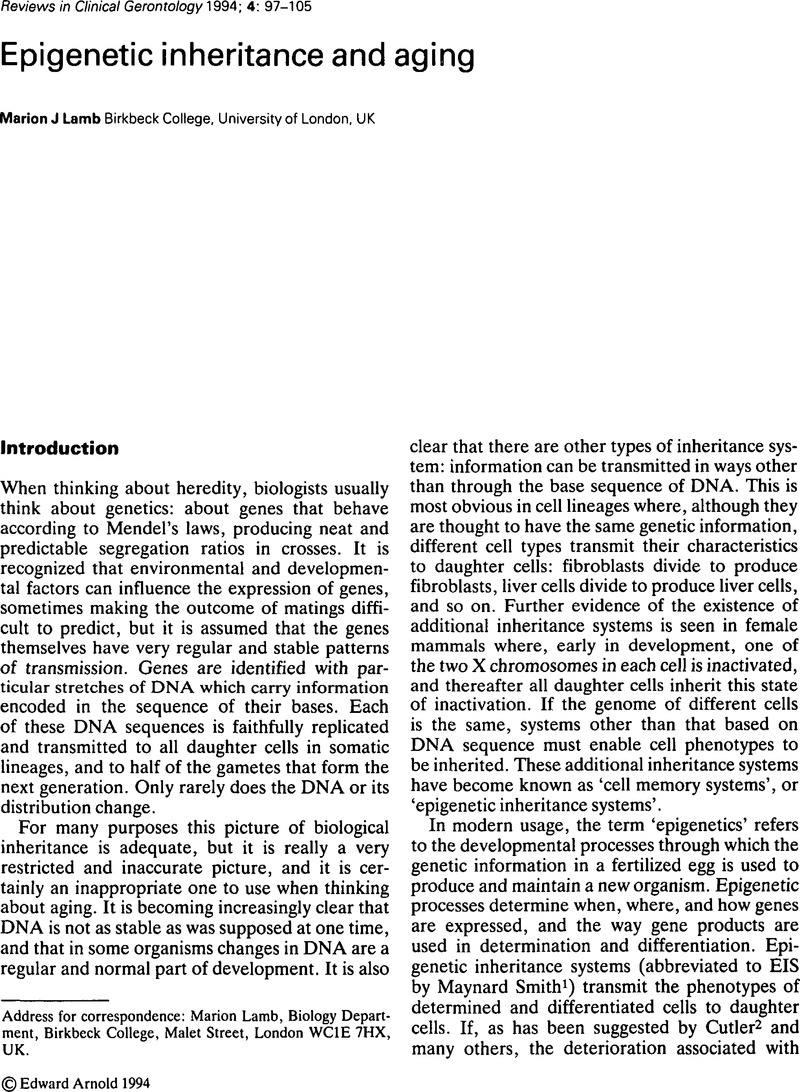Crossref Citations
This article has been cited by the following publications. This list is generated based on data provided by Crossref.
JABLONKA, EVA
and
LAMB, MARION J.
2002.
The Changing Concept of Epigenetics.
Annals of the New York Academy of Sciences,
Vol. 981,
Issue. 1,
p.
82.
Corwin, Elizabeth J.
2004.
The Concept of Epigenetics and Its Role in the Development of Cardiovascular Disease: Commentary on “New and Emerging Theories of Cardiovascular Disease”.
Biological Research For Nursing,
Vol. 6,
Issue. 1,
p.
11.
Waterland, Robert A
and
Jirtle, Randy L
2004.
Early nutrition, epigenetic changes at transposons and imprinted genes, and enhanced susceptibility to adult chronic diseases.
Nutrition,
Vol. 20,
Issue. 1,
p.
63.
Jablonka, Eva
and
Lamb, Marion J.
2007.
Bridging the gap: The developmental aspects of evolution.
Behavioral and Brain Sciences,
Vol. 30,
Issue. 4,
p.
378.
Jablonka, Eva
and
Raz, Gal
2009.
Transgenerational Epigenetic Inheritance: Prevalence, Mechanisms, and Implications for the Study of Heredity and Evolution.
The Quarterly Review of Biology,
Vol. 84,
Issue. 2,
p.
131.
Papadopoulos, Dimitris
2011.
The Imaginary of Plasticity: Neural Embodiment, Epigenetics and Ecomorphs.
The Sociological Review,
Vol. 59,
Issue. 3,
p.
432.
Pandian, Ganesh
and
Sugiyama, Hiroshi
2012.
Strategies To Modulate Heritable Epigenetic Defects in Cellular Machinery: Lessons from Nature.
Pharmaceuticals,
Vol. 6,
Issue. 1,
p.
1.
2014.
The Biostatistics of Aging.
p.
226.
2018.
Experimental Practice.
p.
79.
2018.
Experimental Practice.
p.
27.
2018.
Experimental Practice.
p.
211.
2018.
Experimental Practice.
p.
257.
2018.
Experimental Practice.
p.
117.
2018.
Experimental Practice.
p.
1.
2018.
Experimental Practice.
p.
94.
2018.
Experimental Practice.
p.
160.
2018.
Experimental Practice.
p.
49.
2018.
Experimental Practice.
p.
11.
2018.
Experimental Practice.
p.
138.
Galipaud, Matthias
Kokko, Hanna
and
Gaillard, Jean‐Michel
2020.
Sex, senescence, sources and sinks.
Functional Ecology,
Vol. 34,
Issue. 1,
p.
55.



